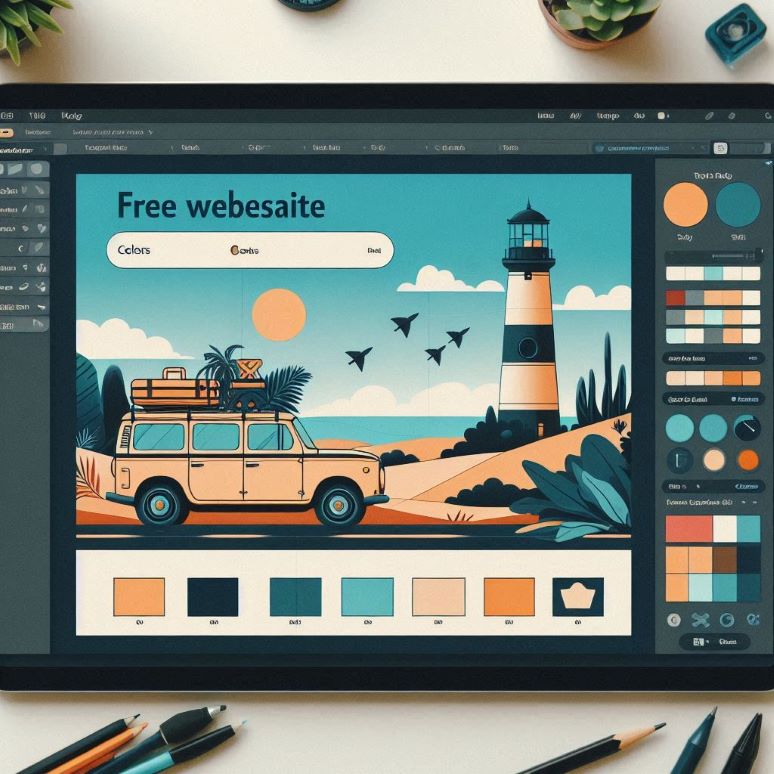A well-designed travel blog can transform your online presence, captivating readers with stunning visuals and seamless layouts. Visual appeal is crucial for travel bloggers who aim to showcase their journeys in a way that inspires and informs. However, creating a professional website doesn’t have to be daunting or expensive. You can create a captivating blog that reflects your adventures with free tools like Figma and pre-designed website templates.
A free Figma website template is a fantastic place to start if you’re new to website design. These templates provide ready-made designs that you can customize to suit your style. From showcasing high-quality travel photos to organizing itineraries and destination tips, a good template makes it easy to maintain a cohesive and professional look for your blog.

Why Choose a Free Figma Website Template?
Figma is a user-friendly design tool that allows for real-time collaboration, making it perfect for both beginners and experienced designers. Using a free Figma website template, you can save time and focus on creating content instead of starting from scratch. These templates are often optimized for travel blogs, featuring sections for photo galleries, travel itineraries, and blog posts.
Here’s why Figma templates are ideal for travel bloggers:
- Customization Made Easy: Templates are fully editable, letting you tweak colors, fonts, and layouts to match your brand.
- Optimized for Storytelling: Many travel-specific templates include spaces for photo collages, maps, and text, helping you tell your travel stories more effectively.
- Responsive Designs: Most templates are designed with mobile and desktop users in mind, ensuring your blog looks great on any device.
How to Get Started with Figma Templates
Starting with a free Figma website template is simple and doesn’t require advanced technical skills. Here’s a quick guide to help you begin:
1. Select the Right Template
Browse through Figma’s extensive collection of free templates. Look for one tailored to travel blogs, with sections for imagery, text, and maps. Ensure the template offers responsive designs to enhance user experience across devices.
2. Customize to Reflect Your Brand
Once you’ve chosen your template, customize it to align with your style. Update the color palette to reflect your blog’s theme—whether it’s adventurous, luxurious, or minimalist. Add your logo, adjust the fonts, and rearrange elements to create a unique layout.
3. Showcase Stunning Visuals
As a travel blogger, your photos are vital to your storytelling. Use the gallery sections to feature high-quality images from your trips. Highlight breathtaking landscapes, cultural snapshots, and memorable moments. This engages readers and gives them a vivid picture of your adventures.
4. Organize Your Content
A good travel blog is both visually appealing and easy to navigate. Use the template’s sections to categorize your content. For instance, create separate pages for itineraries, travel tips, and personal reflections. Clear organization improves user experience and keeps readers coming back.
5. Preview and Test
Before launching your website, preview it to ensure everything is in place. Check how the design looks on both desktop and mobile devices. Make adjustments as needed to ensure a seamless browsing experience.
Benefits of a Professional Travel Blog Design
A professional blog design enhances your credibility as a travel blogger. It also helps you stand out in a crowded digital space. Readers are likelier to trust and engage with a polished and user-friendly website. You don’t need to spend a fortune with a free Figma website template to achieve this.
Additionally, an attractive design makes it easier to monetize your blog. Brands and travel agencies are likelier to collaborate with bloggers who maintain professional websites. Whether through sponsored content, affiliate marketing, or ad revenue, a well-designed blog opens doors to various income opportunities.
Tips for Creating a Standout Travel Blog
- Be Consistent: Use a consistent color scheme and typography throughout your site.
- Prioritize User Experience: Keep navigation simple and intuitive.
- Incorporate Interactive Elements: Use maps, embedded videos, or sliders to make your blog more engaging.
- Focus on SEO: Optimize your content with keywords to improve visibility on search engines.
- Tell a Story: Make each post more than just a summary—immerse readers in your experiences.
READ ALSO: HOW TO GET THE PERFECT TRAVEL PHOTO
Conclusion
Travel blogging is as much about storytelling as it is about design. You can create a visually stunning and functional website that elevates your stories using a free Figma website template. These templates, from organizing content to showcasing visuals, provide a solid foundation for your blog. With some creativity and customization, you’ll have a platform that inspires readers and captures the essence of your journeys.